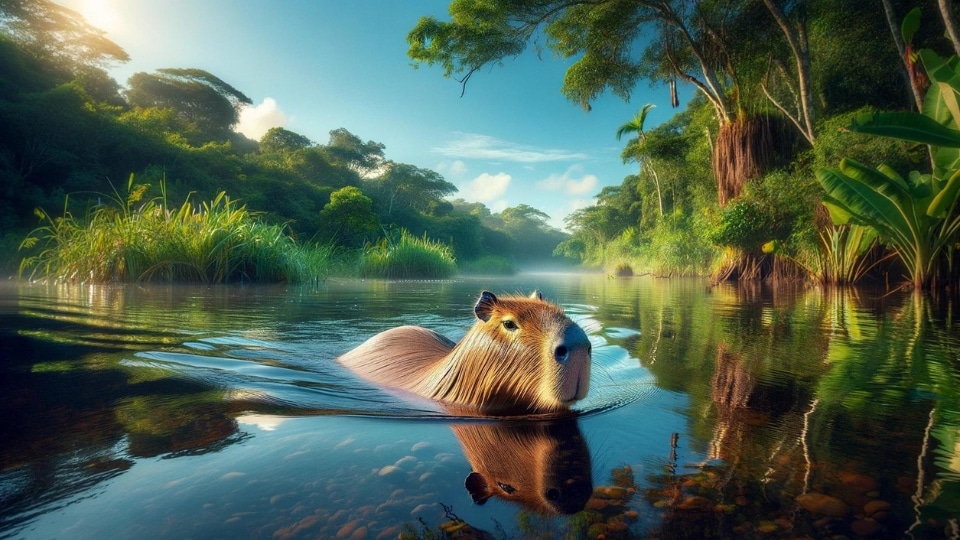Crocodiles and alligators can prey on capybaras, but instances of them eating capybaras are relatively rare. In certain habitats, these predators and capybaras coexist peacefully, often seen together without conflict. This unusual relationship is influenced by various ecological factors and the abundance of other food sources.
Capybaras, known scientifically as Hydrochoerus hydrochaeris, are the world’s largest rodents, native to South America.
Capybaras thrive in the wetlands, rivers, and marshes feasting mainly on grasses and aquatic plants.
Their size is deceptive; despite being large, they are preyed upon by jaguars, anacondas, and even birds of prey.
Yet, in the dance of predator and prey, capybaras and crocodilians often choose a peaceful cohabitation.
Understanding Capybara Behavior and Habitat
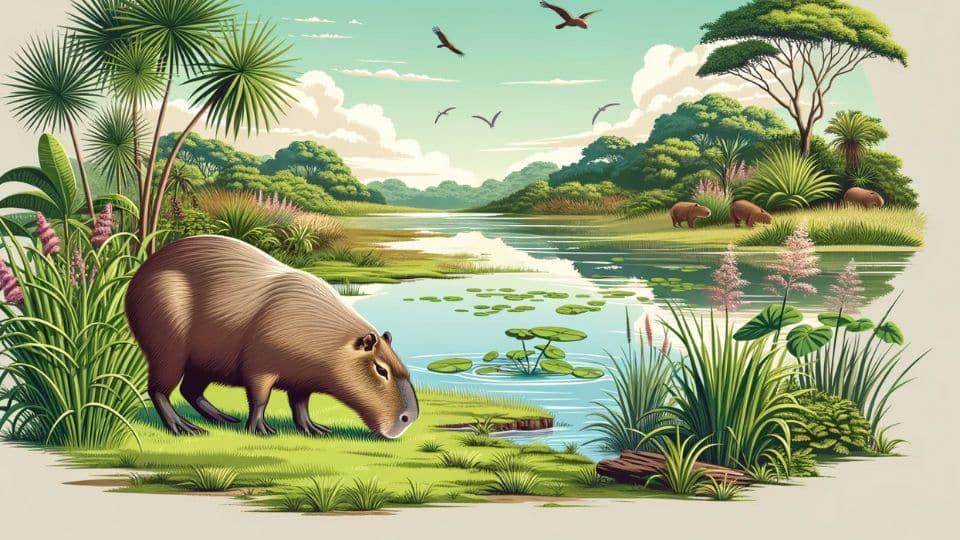
These gentle giants are known for their sociable nature, often found in groups that can number up to a whimsical 100, echoing the vibrant social dynamics of a small village.
They are semi-aquatic, gracefully diving and navigating through water as if it’s their playground, using it as a haven from land-based threats.
Observing their behavior and habitat preferences is key to unraveling the mystery of their interactions with potential predators.
The Capybara-Crocodile Relationship
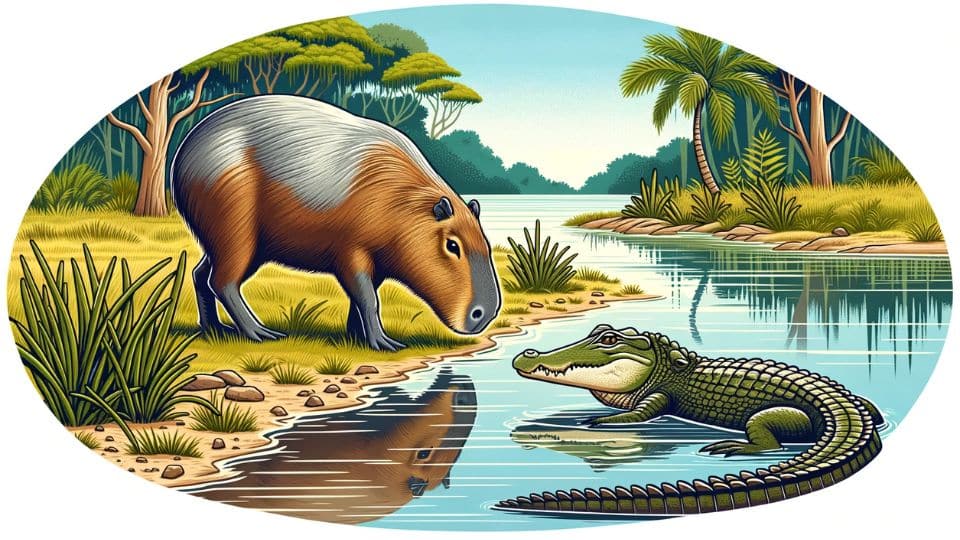
Intriguingly, crocodiles, known for their predatory nature, often display a surprising tolerance towards capybaras.
There are documented instances where capybaras are seen resting or grazing near crocodiles without any signs of aggression from the latter.
This unusual relationship is not fully understood but is thought to be influenced by the abundance of other food sources, territorial behavior, and the non-threatening nature of capybaras. Kids will love learning more about capybaras with these fun coloring sheets designed just for them.
Alligators and Capybaras
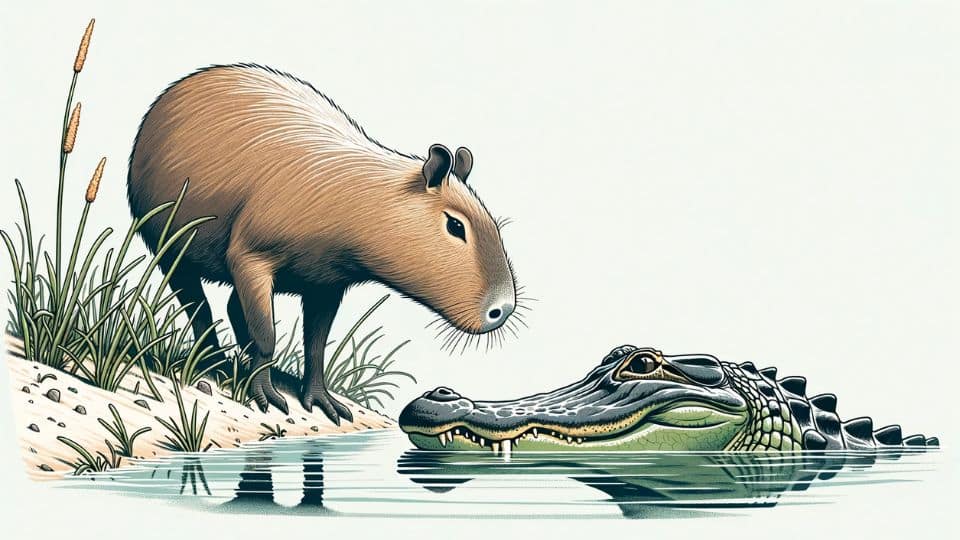
Similar to crocodiles, alligators also exhibit a non-aggressive stance towards capybaras in certain environments.
This peaceful coexistence is particularly observed in regions where food is abundant, reducing the likelihood of alligators viewing capybaras as prey.
This phenomenon highlights the adaptability and tolerance of these predators in diverse ecological settings.
In the wild, the capybara must constantly be aware of predators, a fact that underscores the importance of understanding their behavior and how they might react in potentially dangerous situations.
Predatory Behavior of Crocodiles and Alligators
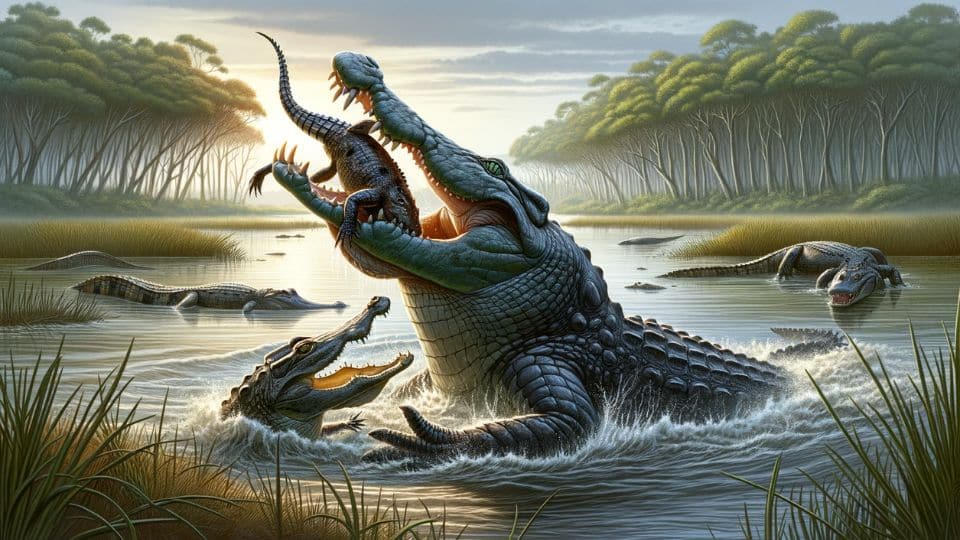
Crocodiles and alligators are apex predators in their ecosystems, primarily feeding on fish, birds, and mammals. Their interaction with capybaras is a deviation from their usual predatory behavior.
Factors such as the size of the capybara, the availability of easier prey, and the specific environmental conditions might influence their decision to not prey on capybaras. While wild capybaras face predators, pet ownership is another challenge. For example, find out if you can own a capybara in Virginia legally.
Capybara Predators
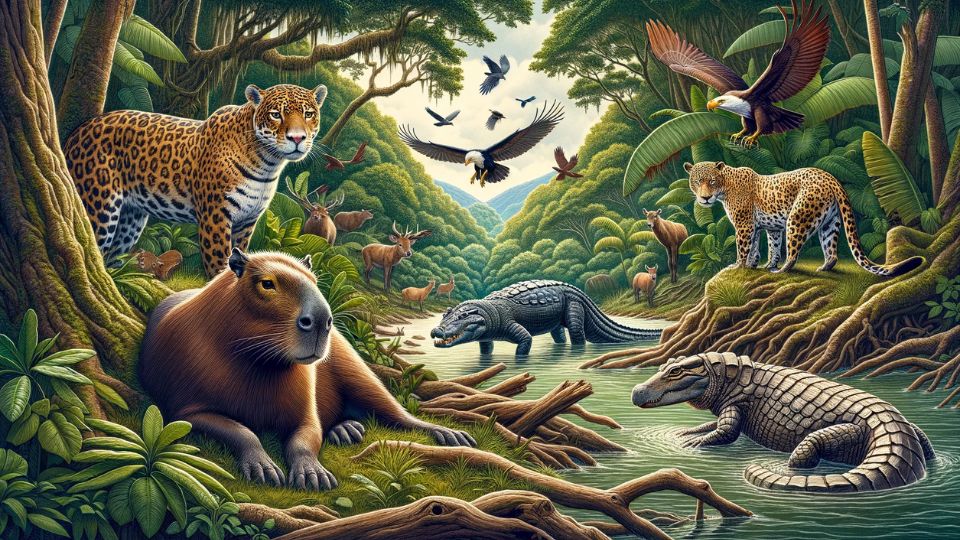
While crocodiles and alligators are potential threats, capybaras face greater danger from other predators.
Jaguars and anacondas are particularly formidable, with jaguars being capable of overpowering a capybara on land, and anacondas posing a threat in water.
These predators have a more direct impact on capybara populations than crocodilians.
The capybara’s response to predators is not just about evasion; their speed plays a crucial role in their survival strategy, allowing them to escape threats in ways that can be quite surprising to those unfamiliar with their capabilities.
Human Impact on Capybara Populations
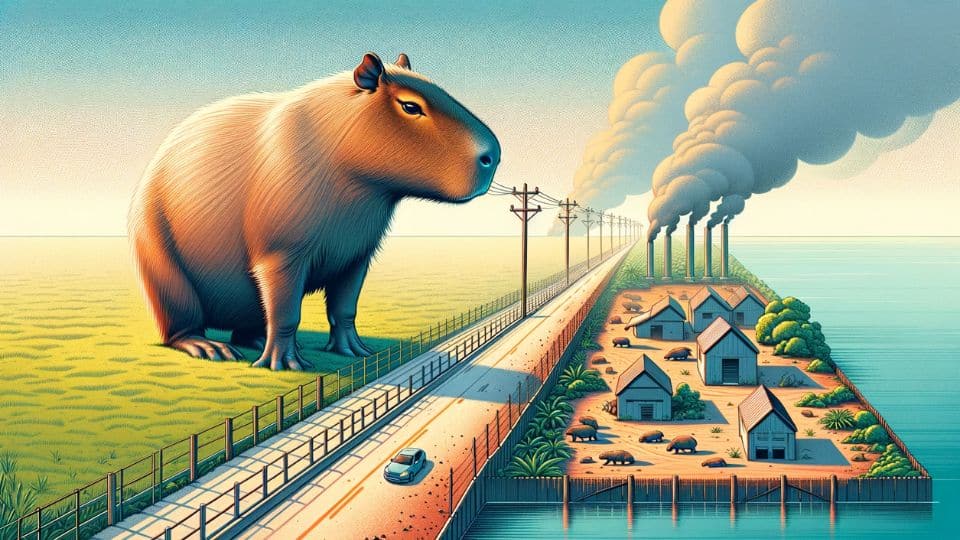
Human activities have significantly impacted capybara populations. Habitat destruction due to agriculture and urban development reduces their living spaces, while hunting for meat and skin poses a direct threat.
These human-induced factors have a profound effect on capybara populations, altering their natural interactions with predators like crocodiles and alligators.
You might also be curious about how they compare with other water-loving creatures like beaver in terms of behavior and habitat.
The Role of Ecosystems in Capybara Safety
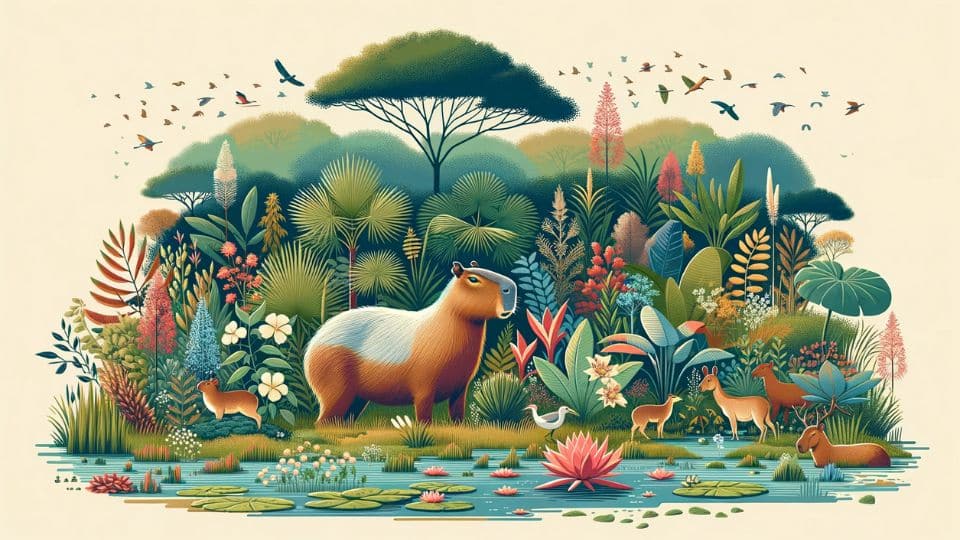
The safety and survival of capybaras are deeply intertwined with the health of their ecosystems.
A balanced ecosystem ensures the availability of food sources for predators like crocodiles and alligators, reducing the likelihood of them preying on capybaras.
Healthy water systems and vegetation are essential for providing natural shelters and food for capybaras, contributing to their coexistence with predators. For a broader understanding of capybara predators and survival strategies, our capybara facts offer more information.
The Intriguing Dynamics of Nature
The relationship between capybaras and their potential predators is a vivid example of the complexity and interdependence of natural ecosystems.
These interactions, filled with unexpected moments of peace and tolerance, remind us of the delicate balance in nature and underscore the importance of preserving diverse habitats for the benefit of all species.
If you are an environmentalist, you can wear custom lanyards that can be designed according to your preferences and the pattern you want to call on people to protect the environment, such as a cute pattern of crocodiles and capybaras coexisting or other environmental protection themes you want to express.
When you wear it, passers-by will be attracted to you, they will respect you, and will be inspired by you to join the environmental movement. A small lanyard can be regarded as a symbol of your environmentalism and your belief in protecting nature.




